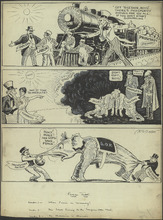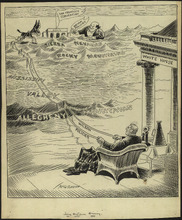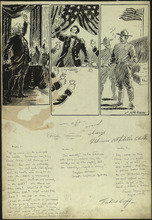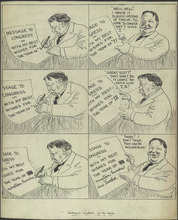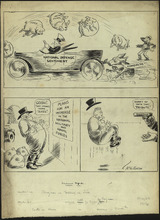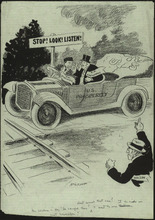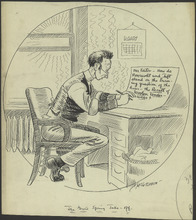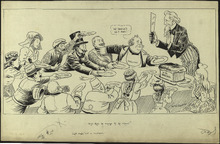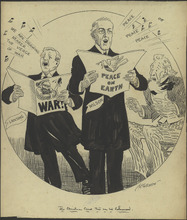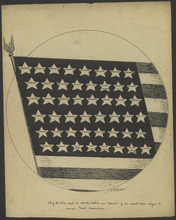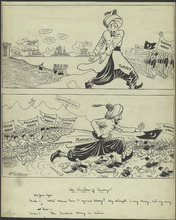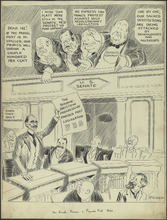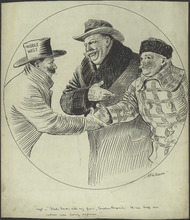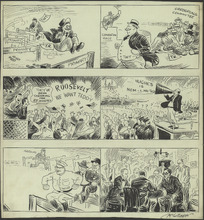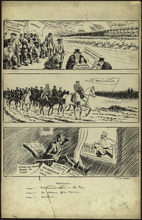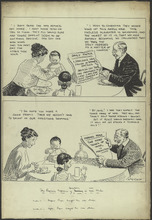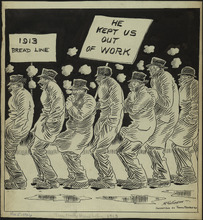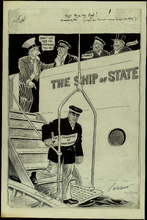JM-144: Peace Talk
In the first panel, capital and labor are in an argument. This is a personification of the series of labor disputes between workers and large business owners that were a common product of the Industrial Revolution. Usually these disputes were about implementing better employment practices such as better wages, workers' compensation, safety regulations, etc. This argument is delaying the train of 1916, which holds the economic prosperity the United States experienced due to it funding and manufacturing supplies for the European nations fighting in World War I. Uncle Sam, the United States, is attempting to resolve the conflict between Labor and Capital, so they can become ready to experience the prosperity 1916 is bringing. Notice the bottom notation says this "peace" is necessary. The second panel portrays a wide view of the world with the United States on the left and Europe on the right. On the left, Uncle Sam (the United States) is being asked by humanity to intervene and mediate in Europe. This exchange references those who thought the United States had a moral duty to help end World War I in Europe. On the right side of the panel, is a depiction of the World War I conflict being shielded from the glow of peace (the sun). The Allies (Britain, France, Italy) are fighting with the Teutons (Germany and its allies with Germanic roots). Looming over this fight are the personifications of financial and physical death. This shows the devastation World War I has caused in Europe. The last panel depicts the internal debate between politicians in the US about what action should be taken regarding European intervention. On the left, "progressive" politicians pull the elephant ( the Republican party) towards peace, meaning they want the US government to help European nations negotiate a peace. Notice the Progressive politician is dressed in relatively simple clothing, which suggests he appeals more the common man. The "old guard" politician is pulling the Republican party away from peace, meaning he wishes the United States to remain neutral and not intervene in World War I. He is dressed more upscale, which suggests his ideas represent the older, more wealthy population that is profiting on the war. (Summary created by Mary Delano, MU History Intern, Spring 2018)
